
Update: wow, I did an AWFUL job of summarizing SRI’s first webinar. (Apologies to the good folks at SRI) Here’s a better summary:
Sikh Theology – A Gurmat Framework: The first session comprised of introducing an approach to Sikhi and recognizing how Guru Nanak Sahib revolutionarily delivered a message of Oneness through illustrating a direct connection between ideas and practice. We engaged in understanding what ‘Guru’ means in the Sikh context and how we can begin to comprehend the Guru’s wisdom, Gurmat. To develop this understanding, three facets of bani (scripture), tavarikh (history) and rahit (lifestyle) were introduced. The greatness of a religion is when harmonious balance between Ultimate reality and visible form is exemplified thru the aforesaid facets. We concluded with Puran Singh’s rendering on the Guru’s vision, “It sweetens you and your sweetness sweetens all life around. At your sight, the lamb and the tiger must drink at the same pool.”
And some info on session 2:
Bani – The Message: In session two, we continued to build on our understanding of the Guru’s message; We engaged in actively learning about the scriptural canon, the Guru Granth Sahib. In covering topics as the compilation, contributors, structure, language and content of Guru Granth Sahib, we tackled questions such as, “How do we know Guru Granth Sahib is the Guru?” and “What is the Sabad Guru?”; thus, facilitating and inspiring us to continue to build our personal relationship with Guru Granth Sahib.
And 3:
Tavarikh – The Revolution: Having concentrated on the written form of our Guru’s message (Bani) last week, this week in session three, “Tavarikh – The Revolution”, we will turn our focus on to how our Gurus exemplified The Message. We will walk through the lives of Guru Nanak Sahib through Guru Gobind Singh Sahib and try to understand them through a social, political, economic and spiritual framework. We will cover a range of issues, from touching on the ramifications of negating the need of a Divine intermediary, to the economic center created by the Guru Sahibs, to the activism of both social and political kind. In surveying the inspiring history of our Gurus, we hope to remind ourselves of how relevant, active and exemplary the revolution of Sikh? is.
Dr. Pashaura Singh, Professor at University of California, Riverside, was recently appointed to its Dr. Jasbir Singh Saini Chair in Sikh and Punjabi Language Studies. However, not without controversy. There have been several incidents since his inception to the Chair where members of the Sikh community have challenged his appointment because of Dr. Singh’s interpretation of the Sikh scriptures.
Sikhs believe the scriptures were revealed to a series of gurus…those revelations in the form of 6,000 hymns were compiled in 1604 by the fifth guru, Guru Arjan, and became the holy scriptures. Pashaura Singh’s thesis and subsequent research are based on a manuscript that surfaced in 1987 that he believes is a draft of the 1,430-page document compiled by Guru Arjan. Singh says the so-called 1245 manuscript, part of the rare book collection at Guru Nanak Dev University, includes sections that are blank and others that have been crossed out, showing evidence of having been edited. [link]
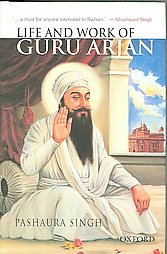 The story goes back many years. Singh, coming from the University of Michigan, was hired in 2005 to teach Sikh and South Asian religious studies. While at that time the chair position was not official, Dr. Singh was recruited with the promise of a potential endowed chair that would provide him with financial support for research. At that time, members of the Sikh community expressed concern about Dr. Singh’s appointment stating his research was problematic and challenged traditional Sikh views. Another issue stemmed from the fact that Ellen Wartella, executive vice chancellor and provost, assured the community in writing that while Singh would teach religious studies “it has been determined that he will not hold this chair.” The community is upset that the university went back on its word.
The story goes back many years. Singh, coming from the University of Michigan, was hired in 2005 to teach Sikh and South Asian religious studies. While at that time the chair position was not official, Dr. Singh was recruited with the promise of a potential endowed chair that would provide him with financial support for research. At that time, members of the Sikh community expressed concern about Dr. Singh’s appointment stating his research was problematic and challenged traditional Sikh views. Another issue stemmed from the fact that Ellen Wartella, executive vice chancellor and provost, assured the community in writing that while Singh would teach religious studies “it has been determined that he will not hold this chair.” The community is upset that the university went back on its word.
Today, members of the Sikh community are still upset about Dr. Singh’s appointment and are arranging a peaceful protest on the university grounds on September 26th, 2008.
The idea that the scriptures were edited or changed is blasphemous to traditional Sikhs. “If this is true, then the revealed word of God is not the revealed word,” said Dr. Baljeet Sahi, an Altadena veterinarian and president of Sikhs for Preservation of Sikhism and Sikh Heritage. Sahi called the 1245 manuscript fraudulent and said it was obtained from a scrap dealer. He said it may have been written by one of the guru’s rivals, who started a parallel tradition after he was denied a guruship. [link]
Jagmohan Malhi has become New Zealand’s first officer to wear the custom police turban. Following in the footsteps of the British constabalry (who also have specially tailored turbans), and the MTA, New Zealand  adopted the new attire after Malhi’s campaign to include the turban in the uniform.
adopted the new attire after Malhi’s campaign to include the turban in the uniform.
Interestingly, Malhi discusses the many challenges and accommodations he’s made since coming to the New Zealand, including cutting his kes and dari when he first arrived. I found this move towards practice really interesting; Malhi mentioned that he wanted to make this possible out of respect for his dying father’s wishes.
Is this the “right” rationale for this move? On one hand, I think it’s admirable and important for there to be the option and existence of visible Sikh officers in New Zealand’s police force. On the other hand, how do we make this possible, and how do people come to this place?
In the past, several posts have focused on the work of the Sikh Coalition around community mobilization to fight school bullying and the launch of an educational tool. 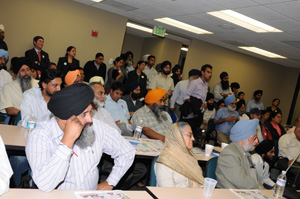 As part of the Sikh Coalition’s on-going work, it has opened a new office in Northern California to provide coast–to-coast civil/human rights advocacy for Sikhs. On September 10th, over 100 attendees, including local community members and politicians, celebrated the Sikh Coalition’s office opening in Fremont, California.
As part of the Sikh Coalition’s on-going work, it has opened a new office in Northern California to provide coast–to-coast civil/human rights advocacy for Sikhs. On September 10th, over 100 attendees, including local community members and politicians, celebrated the Sikh Coalition’s office opening in Fremont, California.
The Coalition’s, Western Regional Director, Neha Singh, said:
“Fremont is nationally the heart of the Sikh community … since we started, we’ve always taken cases from around the country, and a large amount of them were from the Bay Area. We thought it was now time to open an office in an area where a lot of the people requesting our services were.”
On September 19, a full bench of the Punjab and Haryana High Court will begin hearing arguments to decide the constitutional contours that define a Sikh under the Gurdwara Act of 1925. The decision will have important consequences, such as whether sahajdhari Sikhs ought to have voting rights in SGPC elections.
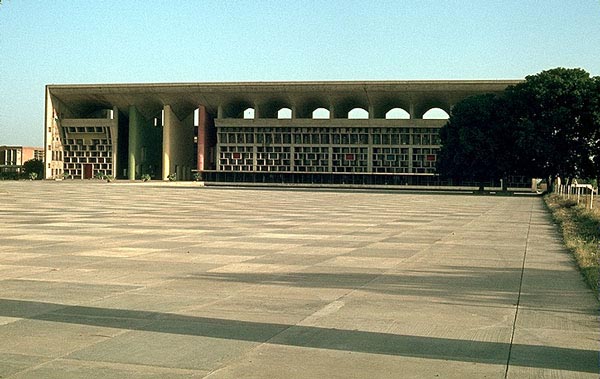 I’m not completely sure how the courts in India work, but the full bench seem to be joining two unrelated cases, that both turn on the definition of a Sikh, under the Gurdwara Act of 1925.
I’m not completely sure how the courts in India work, but the full bench seem to be joining two unrelated cases, that both turn on the definition of a Sikh, under the Gurdwara Act of 1925.
One:
. . . a plea filed by Gurleen Kaur whose candidature for an MBBS seat in the SGPC-run Guru Ram Dass Institute of Medical Education & Research, Amritsar had been rejected. . . Significantly, the college had a 50 per cent quota for Sikhs but Gurleen was denied the seat on the ground she did not fit the “definition of a Sikh in the purest sense of the term”. In fact, she was dubbed a ‘patit’ Sikh, a term referring those Sikhs one trim their hair or pluck their eyebrows. [link]
The Sri Guru Granth Sahib World University, a project that has the potential to be groundbreaking, was announced in September 2004. As it’s currently being presented, it’s quite an ambitious project. From announcements, it seems that at least in its planning phases, a truly comprehensive education will be offered.
offered.
Contrary to popular perception, the university will be in keeping with modern times and trends, and besides a school of religious and civilisation studies, the institution will also have a school of emerging technologies, school of basic sciences, school of management, school of social sciences, school of arts, school of languages, school of engineering, school of architecture and planning and school of law and social justice.
Talking to TNS, university vice-chancellor Jasbir Singh Ahluwalia said the varsity would neither be religion-based or religion-dominated. The university would take up the teaching of emerging technologies like information technology (IT), biotechnology (BT) and nano-technology, besides other emerging disciplines like ecology, human rights, feminism and empowerment of downtrodden, he said. [link]
The proposed university’s forward-looking goals make me hope that it actually materializes. It strives to address the role that Sikhi should and does play in the 21st century.
Once upon a time, a fellow langa(w)riter commented that you know you’ve made it as a ‘notable’ community, when you are featured on the game-show Jeopardy.
While she may or may not have been right, in today’s consumerist I think when a member of your own has a potato chip named after them that social recognition  grows near.
grows near.
Cricket has never featured very prominently at The Langar Hall, possibly as many commenters have noted, the current American-bias of this young blog. Despite the blog’s current limitations (which we do hope to change in the future), sometimes cricket does make it to our attention, albeit in ways still tied to the diaspora.
A recent article in a Californian newspaper discusses cricket’s popularity. Cricket aficionados have been gathering for years on weekends to come together to play cricket. From software engineers to truck drivers from small store owners to behavioral technicians, sports is one of those rare fields that maintains the potential to bring scores of people together. Although still hardly a blip in the American sporting world, cricket’s popularity continues to blossom:
[updates in italics]
The New York City school system has established a new process for reporting bias and bullying, prompted partially by Sikhs marching in Queens, led by the Sikh Coalition, two months ago. 1.1 million students will be affected by the new regulations. 
The new regulation — which is intended to prevent bullying based on a student’s ethnicity, national origin, religion, gender, sexual orientation or disability — comes two months after leaders of the Sikh population marched in Queens to protest attacks against Sikh students and what the leaders described as a lackluster response by the public school system. [link]
What is this new regulation? It includes several important provisions:
- Every principal must designate a staff member to whom students can report bullying and harassment episodes.
- A new e-mail address — RespectForAll@schools.nyc.gov — has been set up so that students who have been harassed, but do not feel comfortable reporting it to their school, can seek help.
- Each school must create an annual plan “to ensure that it has a safe and supportive learning environment,” and train students in the new rules so that they understand what behavior is prohibited and where to go for help if they have been bullied.
- Schools will have to report all complaints of harassment, intimidation or bullying within 24 hours, and conduct full investigations, including interviews and written statements.
- A full investigation of an incident within 5 days
- A written report for the alleged victim of the results of any incident within 10 days
- School staff members who witness or are told about bullying episodes must report them, and schools must contact the families of accused students. [link]
It seems that “Respect for All” will be a idea promoted by NY schools this coming year, and trends in bias-related bullying will also be tracked.
Newspapers in Panjab have been buzzing about the recent proposal by the Sikhs in Haryana to form their own Gurdwara political body. However, the Chief Minister of Punjab, Parkash Singh Badal, and head of the Akali Dal has been on a warpath trying to prevent such a move. Badal even went so far as to give a sort of veiled threat of the outcome by such a move:
“We are a peace-loving community and hope that attempts to open a fresh festering wound in the country in Punjab would be dropped. The whole of country is already up in flames and it can easily do without another trouble spot in Punjab along the lines of Jammu and Kashmir.” [link]
The problem with forming an opinion or even coming to terms with the situation is the layers of political intentions and motives. In a move to somewhat demystify and explain the situation, I write this post.
An Australian private school has agreed to apologize to a Sikh boy who was denied admission for his refusal to cut his hair and shave (as required by the school dress code). Surprisingly, this is the first time Australia has faced an anti-discrimination case of this nature:
The Anti-Discrimination Tribunal case was the first of its kind involving a Sikh student in Australia, although a British court found in a favour of a Sikh student in a similar trial more than 25 years ago.
An out-of-court settlement was reached in recent weeks after the school agreed to issue a public apology and pay the family undisclosed compensation. Ormiston College yesterday confirmed the settlement, which thwarts a public trial in the tribunal next month.
Australia has a system of minority rights protection that falls broadly under the “multiculturalist” umbrella (albeit in a very different way from the U.K. model). What I find amazing is the broad steps private schools are taking at this juncture to avoid accommodating religious minorities. Like the Sarika Singh case (also involving a private school), both of these schools are, at this point, familiar with its own Sikh community. Cultural competency and latent racism aren’t really compelling or effective screens for bigoted policies. In both cases, families had to turn to a legal remedy (and legal fees) to ensure access to a high quality education for their children.
There’s been a backlash around religious diversity in Western Europe for a while now, with the idea of “secularism” taking on a distinctly anti-religious (or, in most cases, anti-non-Christian-religions) flavor that isn’t really echoed in American conceptualizations of secularism. Do these two school cases mark the beginning of a reaffirmation of the principles underlying anti-discrimination laws? Is this a distinct position from what we see in France, Germany, Turkey and Italy?
This past week, I saw this advertisement about the “GurSikh Speed Meeting.” For those of you who have no idea the Sikhnet’s Gursikh Speed Meeting is obviously (and admittedly) the Sikh version of speed dating. According to the organizers of the program:
The concept is quite simple. An equal number of Sardars and Sardarnis register. On the event date, each Sardar will meet each Sardarni one-on-one and chat for a specified number of minutes rotating till they have met all the Singhnis. This face to face style of meeting has spurred much interest, in addition to, respecting the participant’s privacy. Only if there is an agreed ‘CLICK’ will an exchange of contact information occur.
I remember when I first saw Sikhnet advertising this a couple of years ago and thinking to myself, “this is bold.” I don’t necessarily think dating for Sikhs is anti-gurmat, but dating is definitely still taboo in A LOT of Punjabi Sikh families.
In July of this year Jagmohan Singh, who is being held in a Florida prison on misdemeanor charges, had his hair forcibly cut by prison authorities. Florida’s prison regulations require that hair and beard be cut while a prisoner is in prison and the regulations have been repeatedly upheld on grounds that they serve safety interests. Such regulations disproportionately impact Sikhs and United Sikhs is working to protect Jagmohan Singh (and others) from such discrimination. A few days ago they issued a press release stating that:
UNITED SIKHS’ legal team and religious liberties experts are diligently working on this case, but we need your assistance. Your signatures can make the biggest difference to persuade Florida government officials to take action. UNITED SIKHS calls on all concerned individuals and organizations to sign the petition to save Jagmohan Singh from further trauma and humiliation, and to change the discriminatory Florida prison regulations.
The link to the petition is here.
The sad irony about Jagmohan Singh’s situation is that he narrowly escaped religious persecution under the Taliban in Afghanistan, where Sikhs were not allowed to practice their religion freely under the tyrannical regime. Jagmohan fled to America in 2001 on the basis of religious persecution, only to have his dearest of religious rights violated while serving a sentence for a misdemeanor offense.
Our signatures can make a difference so your activism would be greatly appreciated.
—
Thanks to Dave for sending the link around.
On Wednesday, August 27, the Delhi High Court sentenced 4 men (Lal Bahadur, Ram Lal, Virender and Surinder Pal Singh) to life in prison, eighteen years after a trial court acquitted them for lack of evidence. The men were charged with rioting, murder, and conspiracy, related to the deaths of Rajinder and Sardool Singh who were burnt alive on November 1, 1984 and their property looted in Sagarpur. The 4 men were also fined Rs. 21,000 each (about $481.43 per person). The High Court stated:
“it is a case where the members of one community were singled out and were murdered and their properties were burnt and looted. Such lawlessness deserved to be sternly dealt with”. [link]
Interestingly, the court found that conspiring to commit a crime was equal to committing the actual crime (I’m assuming that “members of unlawful assembly…in prosecution of the object…” is conspiracy; it’s unclear from the press release whether this is for conspiracy to riot/murder/combination):
“We may observe here that the liability of the members of unlawful assembly who knew that an offence was likely to be committed in prosecution of the object for which they had assembled is equal to those who commit it,” the Bench observed in a judgement on an appeal filed by the state challenging the trial court’s acquittal order. [link] (emphasis added)
 According to a couple of sources, the state appealed the case after the trial court found there wasn’t enough evidence in 1990. If this is true, and not just bad journalism (fabricated facts inserted into the press release), I wish I could congratulate the prosecutors who pursued and won this case.
According to a couple of sources, the state appealed the case after the trial court found there wasn’t enough evidence in 1990. If this is true, and not just bad journalism (fabricated facts inserted into the press release), I wish I could congratulate the prosecutors who pursued and won this case.
A sessions court had earlier on October 31, 1990, acquitted the accused due to lack of evidence. But the state had challenged the judgment in the Delhi high court stating that it have enough evidence to nail the accused persons. [link]
Langa(w)riters have posted on AIDS/HIV infection amongst Sikh women here and here. We have discussed issues around support groups and causes of infection. One of the number one risk factors for contracting HIV/AIDS for Punjabi Sikh women is marriage. Many women are infected by their husbands who are intravenous drug addicts and/or clients of prostitutes. Not only are these women’s lives reaped with more havoc at no fault of their own, but there is also an insurmountable amount of stigma these women endure.
This past week, a Sikh woman, Kiranjit Kaur, stood up with tremendous strength and bravery to help combat this stigma. She become the poster-woman for people living with HIV/AIDS in Malaysia. At the age of 35, Kaur has decided to put her face to this disease because “I am here to help the ‘positive’ community and empower them and tell them they are not alone.”
Kiranjit Kaur contracted HIV in 1996 through her husband who was a former drug addict and has since passed away.
After contracting the disease she began working full-time with the Asian Pacific Council on AIDS Services as an advocate for other HIV/AIDS patients.
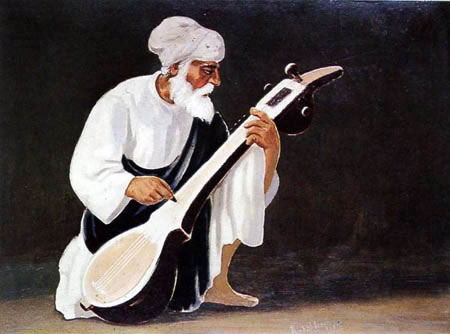 Unfortunately, and perhaps only for myself, I don’t remember the last time I visited one of my local gurdwaras and can say I was moved by the kirtan. Perhaps I feel that most (though not all) kirtan has become modernized to such an extent that it doesn’t really encompass the spiritual enlightenment that shabads were intended to. Actually, it was only after a recent visit to a Namdhari gurdwara that I truly felt that I had heard kirtan in its true element. For those of you who, like myself were unaware, Namdhari Sikhs believe that the only way to reach God is to sing in Raag, the mode of classical Indian music. For Namdhari Sikhs, the instruments they play and the style they sing in is very particular. They place a firm emphasis on rare instruments dating back to the 16th century, the time of Guru Nanak who continued the Vedic tradition of writing the holy scriptures in Raag.
Unfortunately, and perhaps only for myself, I don’t remember the last time I visited one of my local gurdwaras and can say I was moved by the kirtan. Perhaps I feel that most (though not all) kirtan has become modernized to such an extent that it doesn’t really encompass the spiritual enlightenment that shabads were intended to. Actually, it was only after a recent visit to a Namdhari gurdwara that I truly felt that I had heard kirtan in its true element. For those of you who, like myself were unaware, Namdhari Sikhs believe that the only way to reach God is to sing in Raag, the mode of classical Indian music. For Namdhari Sikhs, the instruments they play and the style they sing in is very particular. They place a firm emphasis on rare instruments dating back to the 16th century, the time of Guru Nanak who continued the Vedic tradition of writing the holy scriptures in Raag.
Gurmat Sangeet has always played a significant role in Sikh history and began in the 16th century as the musical expression of divine poetry and yet many of us have never been exposed to this form of kirtan. During our Gurus’ time, Gurmat Sangeet was devotional meditation and music and instruments were used as an accompianment.
Sikh music in the 16th and 17th centuries was comprised of the then-prevalent classical and folk music styles, accompanied by stringed and percussion instruments. The classical style was the devotional dhrupad style, a somber, deeply meditational style in which the text was of prime significance and the music played a supporting, albeit important role in the quest for Divine Essence. Folk music encompassed songs that marked various aspects of life – ghoriaan were sung at marriage, alaahniaan at death, and vaars to glorify brave warriors. [link]
It is said that Raags have a direct relationship to human moods; Soohi representing joy and seperation, Basant representing happiness, and Sarang, sadness. Information from the Sikh Music Heritage Institute states that Guru Nanak began Sikh music with the accompaniment of the rabab, a stringed melodic instrument; Guru Amar Das introduced the stringed instrument, saranda; and Guru Arjan Dev, developed the jori, a two-headed drum. During the 1920s a sharp decline in their use made them almost extinct. The harmonium took the place of stringed instruments and the tabla replaced the pakhaavaj and jori. There are various global efforts taking form to revive classical Sikh music. The Gurmat Sangeet department at Punjabi University, Patiala, the Raj Academy in the UK, and the Sikh Music Heritage Institute in California have dedicated resources to educating and training individuals to play traditional Sikh instruments with the hope that Gurmat Sangeet will be revived.
From 7-Elevens to liquor and 99 cents stores, many Panjabi Sikh immigrants build a life for themselves as store workers. Working at these locations gives them a start in America, while engaging with its harsh realities. Regardless of educational background or the pind/shari divide, Panjabi Sikh immigrants work long hours into the night seven days of week trying to build a stable economic future for them and their families. On August 04, 2008, Inderjit Singh Jassal at the age of 62, was one of these Panjabi Sikh immigrants, who was murdered at a 7-11 store during his usual 13-hour shift in Phoenix, Arizona. Jassal had moved to the US nearly 20 years ago, while his wife and two adult children remained in India.
SALDEF reports that:
Mr. Jassal was working at a 7-11 store in West Phoenix when a black male, later identified as 27 year-old Jermaine Canada, walked in with his two children, aged 2 and 6. According to the surveillance video, the two individuals had a short conversation, at the end of which Mr. Canada pulled a concealed firearm from his shirt and fatally shot Mr. Jassal.
The most ironic aspect of this case is that no motive as been found. According to surveillance video there was no angry exchange between Jassal and Canada and nothing was stolen by the murderer.
SALDEF believes that this killing was nothing other than “… a heinous crime motivated by hate”.
According to one of Canada’s relatives, he had a history of drug abuse and mental illness. At the time of the killing, he was under supervised release following 2 years in prison for violating his probation, for a prior dug conviction, with a weapons charge.
Currently, Tajinder Singh Jassal, a nephew of Inderjit Singh Jassal and co-worker, is working to get immigration visas for Inderjit’s wife and children. He is considering sending an appeal letter to Arizona Senator John McCain’s Office for assistance with the visas because “The family is suffering right now. They want to see their father’s face.”
I don’t really know what to make of this, so I won’t even comment. I’ll just let you form your own opinions.
Paramvir Singh Chattwal, of central Hounslow, who claims to be the world’s only Sikh rodeo star after taking up the sport while living in Texas has hung up his spurs for now to track down information about his decorated forefather, who he believes died in or around [Hounslow]. …Paramvir has already spent years researching the life of Risaldar Major Sher Singh Sirdar Bahadoor, who was an original member of the Punjab Frontier Force, formed in 1849. [link]
I’m more interested in Paramvir’s cowboy-ness, than his hunt for his great great grandfather’s legacy, though Paramvir’s view of his ancestor is a bit twisted. Paramvir seems to be equally proud of his cowboy activities, as his grandfather’s fighting for the British in 1857, against his fellow Indians, and also escorting the Kohinoor to become part of the British treasury.
fellow Indians, and also escorting the Kohinoor to become part of the British treasury.
But Paramvir believes [his ancestor] earned his peers’ respect by escorting theKoh-i-noor diamond, then the largest in the world, on a perilous mission across India to Calcutta before it became part of the British Crown Jewels in 1877. “I couldn’t believe he’d been breaking social barriers in 1887 by mixing with the British aristocracy and five generations later I’m doing the same by taking up rodeo,” said Paramvir. (emphasis added) [link]
I’m not trying to promote a tribal mentality (not that that’s a bad thing). But, since when is “mixing with aristocracy” breaking a social barrier?? Slaves “mixed” with their slave owners. Prisoners “mix” with the guards that keep them locked up. Paramvir, you’re confirming my suspicion that all cowboys are stupid, and I really don’t like to generalize. (Ok, one comment.) I hope this article has misquoted you.
Over a year ago, Ajmer Singh Hothi was found shot dead inside a semi-truck that he had just bought and was still making payments on. Only a day before, he had changed his phone number and gotten a restraining order against his ex-girlfriend and her father. [link]
 More information surrounding the case has recently became available since 553 pages of court records from a grand jury hearing have become public.
More information surrounding the case has recently became available since 553 pages of court records from a grand jury hearing have become public.
A prosecutor accuses Gurparkash Khalsa of being driven by humiliation over his daughter’s soiled reputation to the point of ambushing Hothi in a big rig parked east of Stockton. The 56-year-old now sits in a jail cell charged with capital murder… Details of the case recently became public when San Joaquin County Superior Court Judge Charlotte Orcutt unsealed the 553-page transcripts of a four-day grand jury hearing that ended with Khalsa’s April 25 indictment. He was arrested hours later. [link]
The events that led to Ajmer’s death began with a relationship between Hothi and Khalsa’s daughter.
It began in November 2004, when a secret romance sparked between Hothi and Khalsa’s daughter, Kiranjot Pannu, then age 17. The lovers kept it quiet because Hothi was a lowly trucker, while her father owned Pacific Coast Intermodal in French Camp. Hothi’s father, also a trucker, once worked for Khalsa and feared him, according to Hothi’s sister, Kiranjit Hothi, who testified before the grand jury. [link]
Khalsa forbade the romance and Hothi’s parents sent Ajmer to India for an arranged marriage. But then Khalsa heard rumors that Hothi had gotten his daughter pregnant, and that she’d had an abortion. The angry father then demanded that Hothi marry his daughter. He followed Ajmer to India and tried to have him divorced. It seems that he was unsuccessful, and word of his attempt traveled back to Stockton where Khalsa felt humiliated in the eyes of the community. [link]
Guest blogged by Mewa Singh
I did not think I was going to write this post, but after seeing a post on the most popular South Asian American blog – Sepia Mutiny – by Amardeep Singh, I had to make a comment about Musharraf’s resignation to avoid impeachment.
For a quick primer on the career of the Pakistani dictator – Pervez Musharraf, watch the Al-Jazeera video:

Young Sikhs are extremely internet savvy. From the proliferation of videos on youtube to remixed dhadhi-jatha to an embrace of web 2.0, many young Sikhs are at the forefront of creating new avenues for education about their faith. While I personally believe that most Sikhs focus their attention on education for non-Sikhs, in my opinion, far more crucial is the intra-Sikh education.
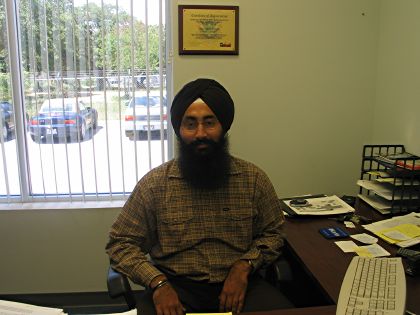 While in an earlier discussion I talked about the importance of the KhalsaKids website, launched last year by the Sikh Coalition. It is an example of Sikhs experimenting with new media forms to better address the needs and concerns of their community.
While in an earlier discussion I talked about the importance of the KhalsaKids website, launched last year by the Sikh Coalition. It is an example of Sikhs experimenting with new media forms to better address the needs and concerns of their community.
In a similar vein, the Sikh Research Institute has recently announced its plans for a “webinar” series, titled “Liv.”
Explaining the impulse of this new project, SikhRI head, Harinder Singh, states:
“We are regularly in touch with Sikh communities in North America, Europe and Asia who want us to deliver programs in their local communities on a regular basis, but it’s been quite difficult due to logistical and financial constraints. Now that we are introducing webinar facilities, our programs can reach anyone around the globe and we look forward to being able to engage with the vast Sikh communities outside of our traditional target area in North America”[link]
The “Liv” project entails four 90 minute seminars to begin at 8am PST (California time) on 4 consecutive Saturdays, beginning September 13, 2008. The first four topics listed on their website includes: “Sikhi – A Gurmat Framework,” “Bani – The Idea,” “Tavarikh (History) – The Revolution,” and “Rahit – The Lifestyle.”
A pre-registration is required to participate in the “webinar” and can be completed here.
While waking up at 8am on Saturdays is beyond my abilities, the seminars being conducted by The Harinder Singh sound intriguing and informative. I hope some of our readers can that do participate can discuss some of their thoughts on the format and the content here.
Also what are new ways that you have seen Sikhs embracing Web 2.0? (yes I am already aware of that one blog, uhhh but I can’t think of the name.)
